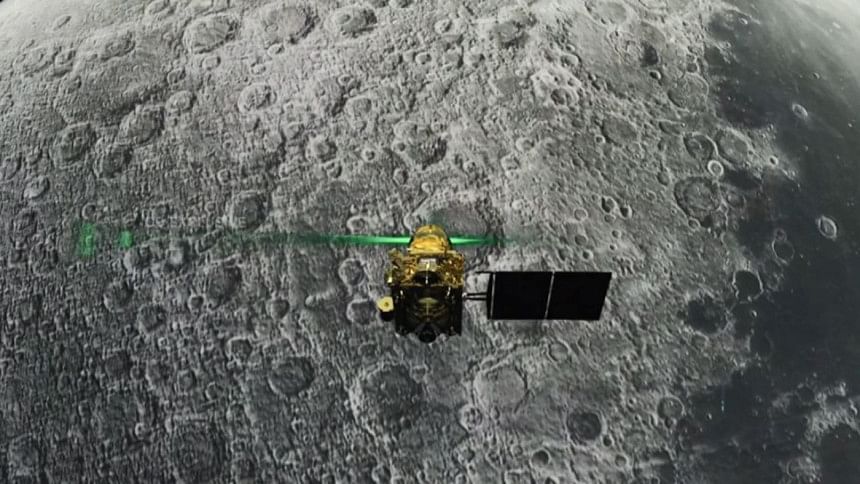India’s Moon lander located

India's second unmanned moon mission Chandrayaan-2 lander Vikram, which contact was lost yesterday, has been located on the lunar surface and it must have been a hard-landing, Indian Space Research Organization Chairman K Sivan said today.
"Yes, we have located the lander on the lunar surface. It must have been a hard-landing," Sivan told the media. He also acknowledged that the soft-landing was not successful.
He said the rover Pragyan was inside the lander and it was located by on-board cameras of the Chandrayaan-2 orbiter which is orbiting the moon at a distance of 100km.
The orbiter equipped the highest resolution cameras, sent back pictures of the lander on the moon.
Asked if the lander was damaged during the hard-landing, Sivan said, "We do not know."
He said efforts to establish contact with the lander were continuing.
India's mission to soft-land on moon suffered a setback during the wee hours of Saturday with the lander losing communication with ground stations of ISRO, just 2.1 km above the lunar surface during its final descent.
Considered as the most complex stage of India's the country's second expedition to the moon, the lander was on a powered descent for a soft-landing when it lost the communication.
The successful landing would have made India the fourth country after erstwhile USSR, the US and China to achieve a soft-landing on the moon.
Chandrayaan-2, a follow-on mission to the Chandrayaan-1 mission undertaken in 2008, comprises an orbiter, lander (Vikram) and rover (Pragyan).
The orbiter carries eight scientific payloads for mapping the lunar surface and study the exosphere (outer atmosphere) of the moon.
'Vikram', named after Dr Vikram A Sarabhai, the father of the Indian Space Programme, was designed to execute a soft-landing on the lunar surface and to function for one lunar day, which is equivalent to about 14 earth days.
The rover was to roll down from the lander explore the surrounding lunar terrain, a few hours after the planned soft-landing.
The Chandrayaan-2 is a Rs 978-crore unmanned moon mission (satellite cost Rs 603 crore, GSLV MK III cost Rs 375 crore).
India's Geosynchronous Satellite Launch Vehicle, GSLV MkIII-M1 had successfully launched the 3,840-kg Chandrayaan-2 spacecraft into the Earth's orbit on July 22.

 For all latest news, follow The Daily Star's Google News channel.
For all latest news, follow The Daily Star's Google News channel. 






Comments